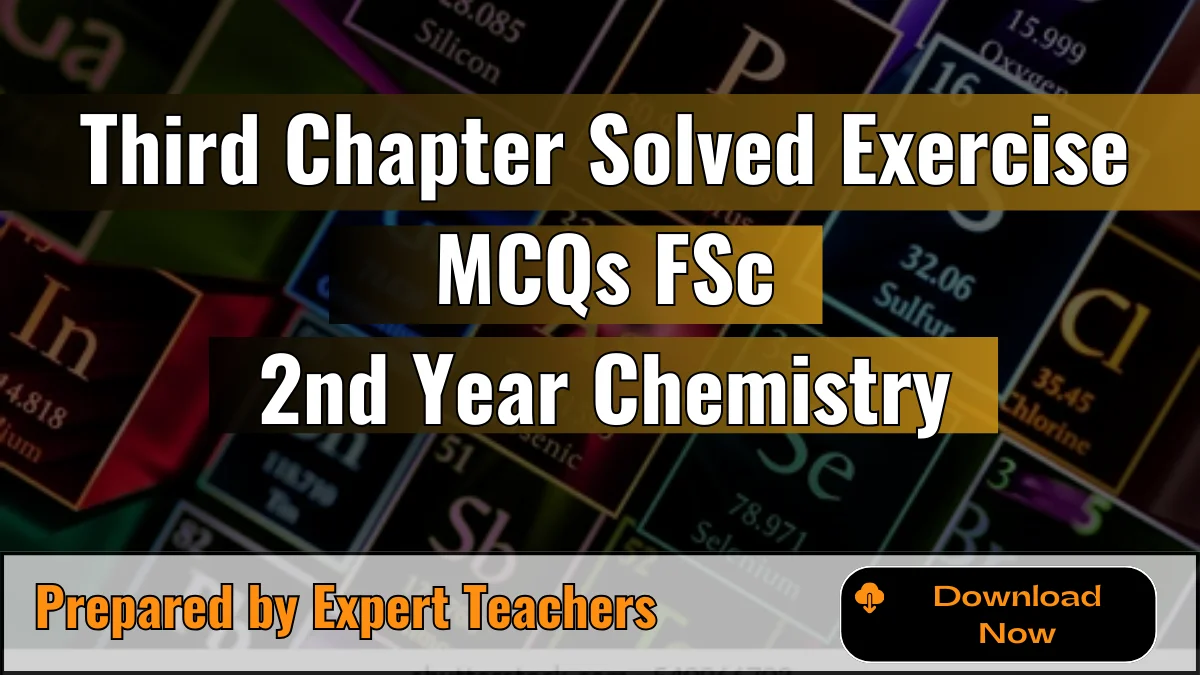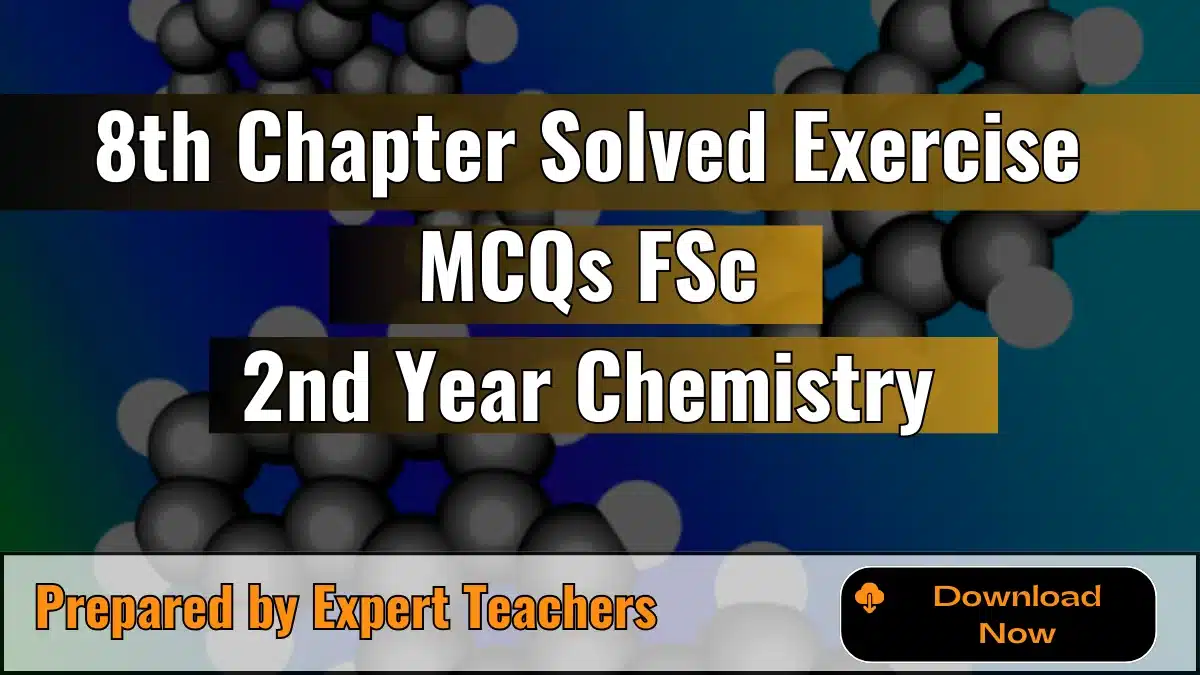Sixth Chapter Solved Exercise MCQs of FSC First Year Chemistry
The 6th chapter Solved Exercise MCQs of FSC 1st-year Chemistry offers a comprehensive collection of multiple-choice questions with answers. Each question is accompanied by a short explanation to clarify the correct choice. These solutions aim to assist students in exam preparation by simplifying complex concepts and building a strong foundation for success.
Sixth chapter solved MCQs with explanation
1. An ionic compound A⁺B⁻ is most likely to be formed when:
(a) the ionization energy of A is high and electron affinity of B is low.
(b) the ionization energy of A is low and electron affinity of B is high.
(c) both the ionization energy of A and electron affinity of B are high.
(d) both the ionization energy of A and electron affinity of B are low.
Explanation: The correct answer is (b). Because ionic bonds form most easily when the cation (A) has low ionization energy, meaning it can lose electrons easily, and the anion (B) has high electron affinity, meaning it can gain electrons easily.
2. The number of bonds in a nitrogen molecule is:
(a) one σ and one π
(b) one σ and two π
(c) three sigma only
(d) two σ and one π
Explanation: The correct answer is (b). Because A nitrogen molecule (N₂) has a triple bond between the two nitrogen atoms. A triple bond consists of one sigma (σ) bond and two pi (π) bonds.
3. Which of the following statement is not correct regarding bonding molecular orbitals?
(a) Bonding molecular orbitals possess less energy than atomic orbitals from which they are formed.
(b) Bonding molecular orbitals have low electron density between the two nuclei.
(c) Every electron in the bonding molecular orbitals contributes to the attraction between atoms.
(d) Bonding molecular orbitals are formed when the electron waves undergo constructive interference.
Explanation: The correct answer is (b). Because Bonding molecular orbitals actually have high electron density between the two nuclei. This means there are more electrons between the nuclei, which helps hold the atoms together strongly. So, this statement is not correct.
4. Which of the following molecules has zero dipole moment?
(a) NH₃
(b) CHCl₃
(c) H₂O
(d) BF₃
Explanation: The correct answer is (d). Because A molecule has a zero dipole moment when its individual bond dipoles cancel out each other. This happens in a molecule with symmetrical geometry.
- BF₃ has a trigonal planar shape, and the three B-F bonds are symmetrically arranged around the central boron atom. The dipoles of these bonds cancel each other out, resulting in a zero net dipole moment.
5. Which of the hydrogen halides has the highest percentage of ionic character:
(a) HCl
(b) HBr
(c) HF
(d) HI
Explanation: The correct answer is (c). Because HF (hydrogen fluoride) has the highest percentage of ionic character because fluorine is the most electronegative element. This means it pulls electrons more strongly towards itself, creating a more polar bond in HF compared to HCl, HBr, and HI. The higher the polarity of the bond, the more ionic character it has.
6. Which of the following species has unpaired electrons in anti-bonding molecular orbitals:
(a) O₂²⁺
(b) N₂²⁻
(c) B₂
(d) F₂
Explanation: The correct answer is (c). Because Boron molecule (B₂) has unpaired electrons in its molecular orbitals. In molecular orbital theory, B₂ has two unpaired electrons in the π2p orbitals. This makes it paramagnetic (attracted to a magnetic field).







Leave a Reply